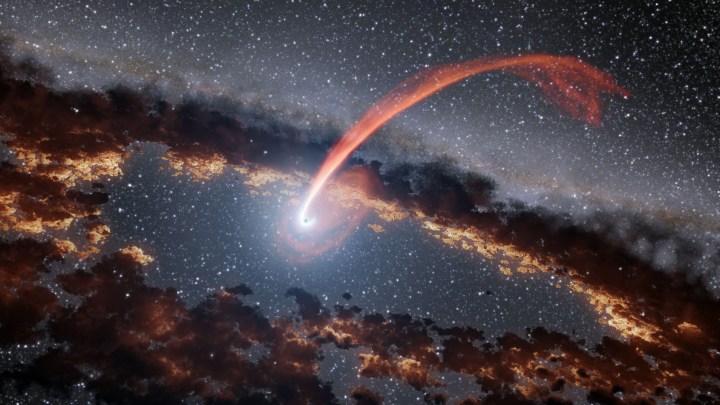
The process of “stellar tidal disruption” has been identified using this method happening near three black holes in one study, with the second study identifying a potential fourth, according to NASA’s Jet Propulsion Laboratory (JPL). Researchers also say that it is the first time such energy bursts have been clearly seen.
“Our study confirms that the dust is there, and that we can use it to determine how much energy was generated in the destruction of the star,” said JPL astronomer Varoujan Gorijan, co-author of one the studies.
These energy flares are extremely powerful and will destroy any dust close by the the event. However, about a half light year away, the spherical and patchy cloud of dust typically found around the black hole is far enough away to absorb the UV and X-ray light being emitted without being destroyed.
“It’s as though the black hole has cleaned its room by throwing flames,” Johns Hopkins University postdoctoral fellow Sjoert van Velzen said of the process.
From there, the dust heats up, which in turn emits infrared light. Those burst of infrareds can then be measured for up to a year from the time the energy flare first occurs. This data is being used to understand more about these flares and also attempt to figure out the nature of the dust itself.
That could be important research, as there is quite a bit about black holes that we simply don’t know because they’re so hard to find.
Editors' Recommendations
- ‘Closest black hole’ isn’t actually a black hole, but a stellar vampire
- Monster black hole gives off epic radio emissions as it chows down on gas
- Closest pair of supermassive black holes is merging into one mega black hole
- This black hole is creating enormous glowing X-ray rings
- Trippy NASA video shows two black holes interacting


